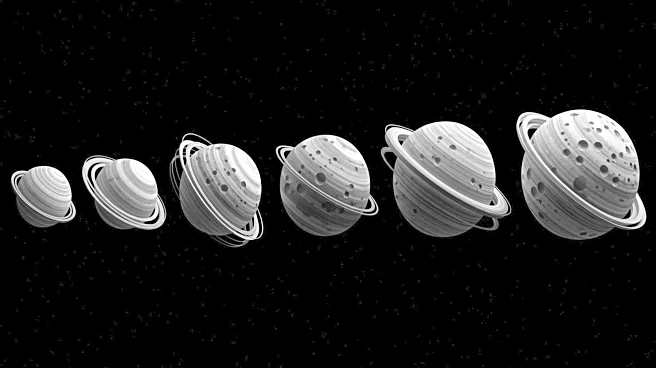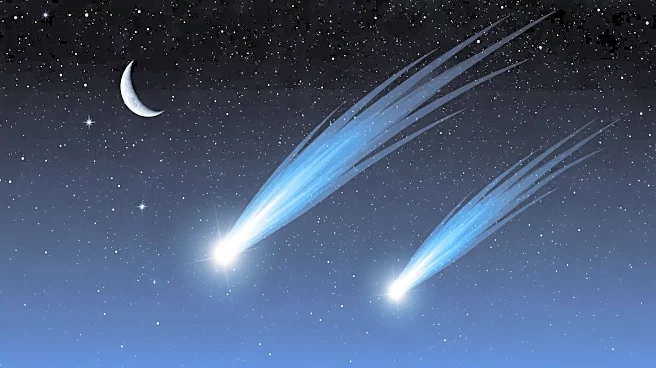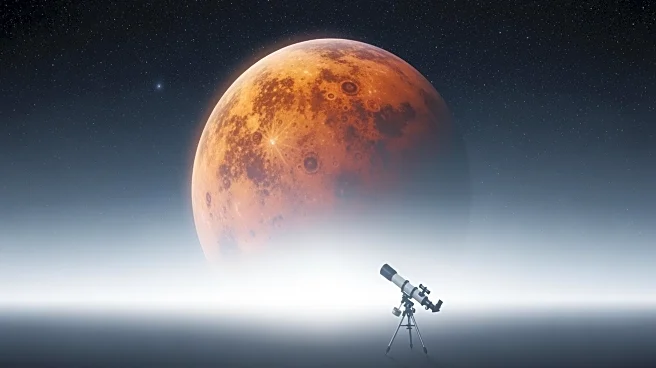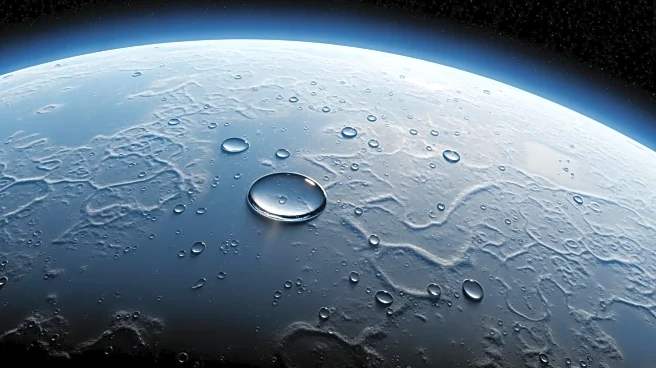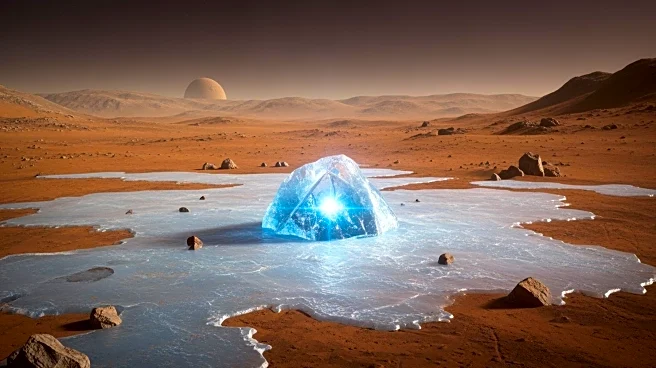What's Happening?
Recent experiments conducted by NASA's Jet Propulsion Laboratory and Chalmers University of Technology have revealed unexpected chemical interactions on Saturn's moon Titan. The study found that frozen
hydrogen cyanide crystals can mix with liquid hydrocarbons like ethane and methane, defying conventional chemistry rules. Typically, polar molecules like hydrogen cyanide do not mix with non-polar substances such as hydrocarbons. However, the research demonstrated that under Titan's frigid conditions, these substances can form stable co-crystals. This discovery challenges existing chemical theories and suggests more complex interactions between Titan's atmosphere and surface than previously understood.
Why It's Important?
The findings have significant implications for understanding prebiotic chemistry, as Titan's hydrocarbon-rich environment is similar to early Earth conditions. Hydrogen cyanide, despite its toxicity, is a precursor to amino acids and nucleobases, essential components of life. This research could provide insights into the chemical processes that may have led to life on Earth and potentially other celestial bodies. Additionally, the study enhances our understanding of Titan's atmospheric and surface chemistry, which could inform future missions, such as NASA's Dragonfly rotorcraft, set to explore Titan in 2034.
What's Next?
NASA's Dragonfly mission will further investigate Titan's surface and atmosphere, potentially verifying these findings and uncovering more complex chemical interactions. The mission aims to sample materials, including hydrogen cyanide ice, to better understand Titan's chemical environment. This could lead to new discoveries about the moon's potential for supporting life or its role in the broader context of astrobiology.
Beyond the Headlines
The study opens new avenues for exploring cold environments in space, where similar chemical interactions might occur. Understanding these processes could help scientists identify other non-polar molecules that might interact with hydrogen cyanide, offering insights into the chemistry preceding life emergence. This research also highlights the importance of interdisciplinary collaboration in advancing space science.




